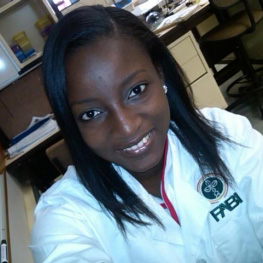Ms Omotayo Adegeye

| PhD student | |
Department |
|
Biochemistry, Genetics and Microbiology |
|
| This email address is being protected from spambots. You need JavaScript enabled to view it. |
My Supervisor/s
| Primary Supervisor | |
| Emma Steenkamp | |
Co Supervisor |
|
| Brenda Wingfield | |
| Mike Wingfield |
My Phd study is on the role of fungal peptide pheromones in Fusarium species belonging to the Gibberella fijikuroi complex (GFC) especially Fusarium circinatum, which is a very important pathogen of Pine species worldwide. Generally, fungal peptide pheromones are small molecules known to initiate sexual attraction between haploid individuals of opposite mating types within species of many fungi and only model species have shown us the possible effects of these pheromones. This project has two overall aims; the first is to determine the exact function(s) of the pheromone genes in GFC using a functional genomics approach combined with standard genetic and microbiology methodologies, the second aim is to determine the effect of the pheromones on the biology of important species in the GFC.
My Journal Articles
| Publication |
|---|
| Swalarsk-Parry BS, De Vos L, Fru FF, Santana QC, van der Nest MA, Wingfield BD, Wingfield MJ, Herron DA, Ramaswe JB, Dewing C, Sayari M, van der Merwe NA, van Wyk S, Lane FA, Wilson AM, Adegeye OO, Soal NC, Price J-L, Steenkamp ET. (2024) Wide variation in aggressiveness and growth in South African Fusarium circinatum isolates with geographical origin as the primary determinant. Southern Forests: a Journal of Forest Science
10.2989/20702620.2024.2363749 |
| Ramaswe JB, Steenkamp ET, De Vos L, Fru FF, Adegeye OO, Wingfield BD. (2024) Sex pheromone receptor Ste2 orchestrates chemotropic growth towards pine root extracts in the pitch canker pathogen Fusarium circinatum. Pathogens 13:425.
10.3390/pathogens13050425 |
| Sayari M, van der Nest MA, Steenkamp ET, Adegeye OO, Marincowitz S, Wingfield BD. (2019) Agrobacterium-mediated transformation of Ceratocystis albifundus. Microbiological Research 226:55-64.
10.1016/j.micres.2019.05.004 |

